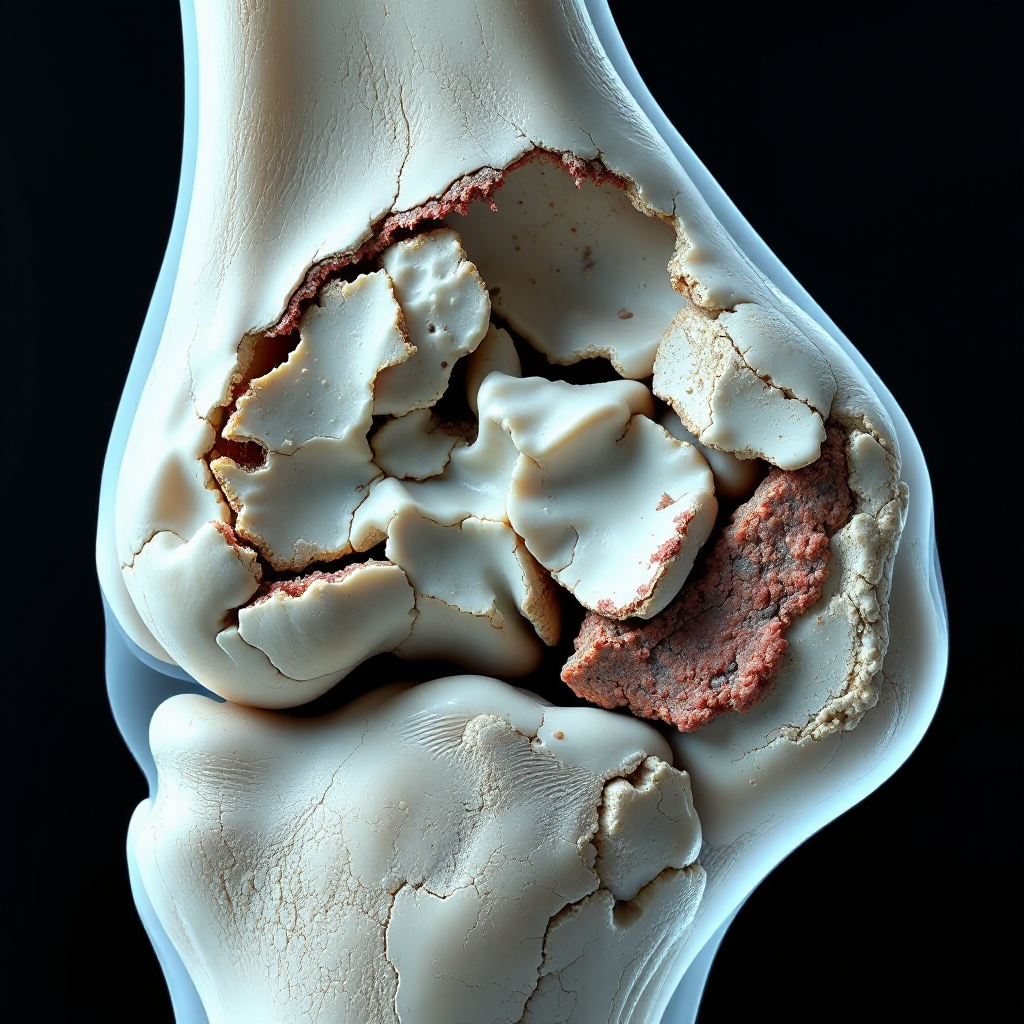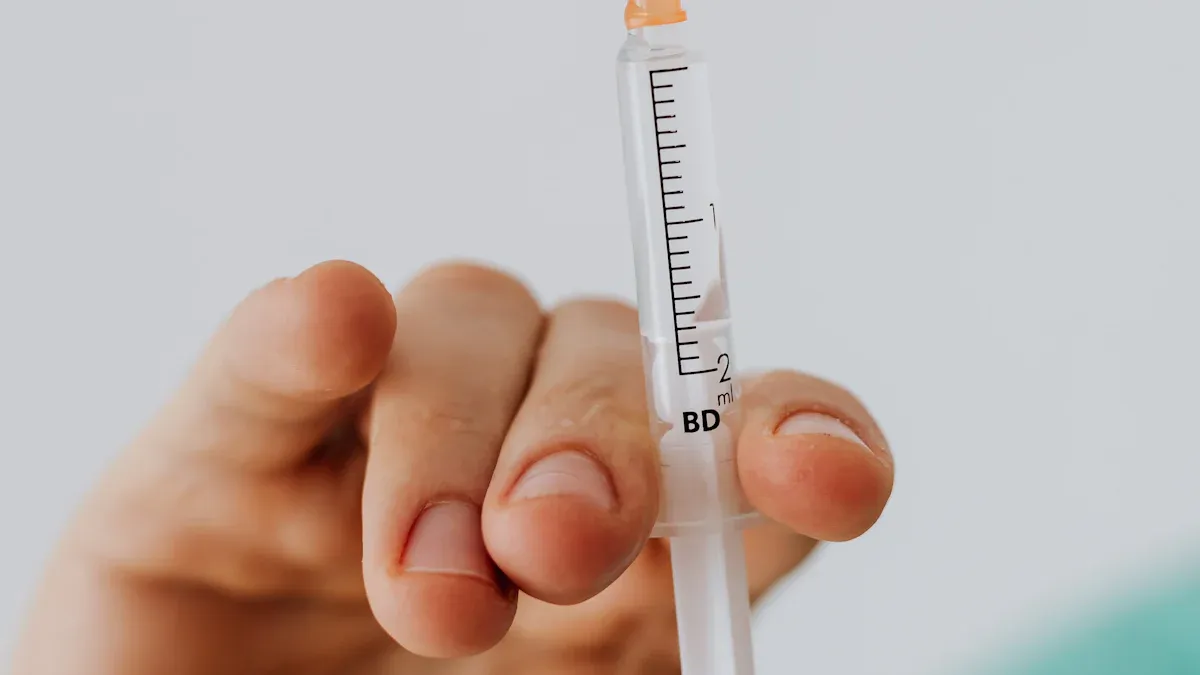What Is Acute Lymphoblastic Leukemia and Its Symptoms?
Acute lymphoblastic leukemia (ALL) is a cancer that starts in the blood and bone marrow. It develops when immature white blood cells, called lymphoblasts, grow uncontrollably. This condition disrupts the production of healthy blood cells, leading to serious health problems. Recognizing symptoms early can improve treatment outcomes significantly. For children, ALL is the most common type of leukemia, accounting for about 75 to 80 percent of cases. Adults can also develop ALL, but it occurs less frequently in this group. Early diagnosis plays a critical role in improving survival rates, especially for children.
Key Takeaways
Acute lymphoblastic leukemia (ALL) is a blood cancer. It mostly affects kids but can happen in adults too.
Symptoms include feeling very tired, getting sick often, and bruising easily. Spotting these signs early helps with better treatment.
Finding ALL early is very important. It can greatly raise the chances of survival, especially for kids.
Talk to a doctor if you see any worrying signs. Acting quickly can save lives.
Knowing the types of ALL, like B-cell and T-cell, helps understand symptoms and treatments better.
Understanding Acute Lymphoblastic Leukemia

What Is Acute Lymphoblastic Leukemia?
Definition and Characteristics
Acute lymphoblastic leukemia is a type of blood cancer that begins in the bone marrow. It occurs when immature white blood cells, known as lymphoblasts, multiply uncontrollably. These abnormal cells crowd out healthy blood cells, leading to issues like anemia, infections, and bleeding. You may hear it referred to as ALL, and it is most common in children but can also affect adults.
How ALL Develops in the Body
ALL develops due to genetic changes in lymphoblasts. These changes disrupt normal cell growth and division. For example:
Abnormal chromosomes can trigger uncontrolled cell growth.
The BCR–ABL fusion gene, caused by a translocation between chromosomes 9 and 22, promotes rapid cell division.
Specific proteins on lymphoblasts help classify ALL into subtypes like B-cell or T-cell ALL.
These processes highlight how genetic mutations play a key role in the development of acute lymphoblastic leukemia.
Causes and Risk Factors
Genetic and Environmental Factors
Certain genetic mutations increase your risk of developing ALL. For instance:
Mutations in genes like NOTCH1, FBXW7, and JAK1 are linked to ALL.
Loss-of-function mutations in NF1 and somatic mutations in FLT3 also contribute.
Environmental factors can also raise your risk. These include:
Exposure to low doses of ionizing radiation during childhood.
Pesticide exposure during pregnancy or early childhood.
Proximity to nuclear facilities or exposure to solvents like benzene.
Interestingly, factors like maternal folic acid intake and breastfeeding for six months or more may lower the risk.
Age Groups and Demographics Affected
ALL affects people of all ages, but it is most common in children under 20, accounting for 53% of new cases. Adults aged 20–34 make up 11.1% of cases, while older adults see a gradual decline in prevalence. This age-related trend shows why early detection in children is so critical.
Age Range | Percent of New Cases |
|---|---|
<20 | 53.0% |
20–34 | 11.1% |
35–44 | 6.6% |
45–54 | 6.8% |
55–64 | 8.4% |
65–74 | 8.1% |
75–84 | 4.5% |
>84 | 1.5% |
Types of Acute Lymphoblastic Leukemia
B-cell ALL
B-cell ALL is the most common subtype, making up about 85% of cases. In children, this percentage rises to 88%. It starts in immature B cells, which are responsible for producing antibodies to fight infections.
T-cell ALL
T-cell ALL accounts for around 15% of cases. It begins in immature T cells, which play a role in immune defense. This subtype is less common in children but can occur in both age groups.
Type of ALL | Percentage of Cases |
|---|---|
B-cell ALL | 85% |
T-cell ALL | 15% |
Symptoms of Acute Lymphoblastic Leukemia

General Symptoms
Fatigue and Weakness
Fatigue and weakness are among the most common symptoms of acute lymphoblastic leukemia. You may feel unusually tired or lightheaded, even after minimal activity. This happens because the disease disrupts the production of healthy red blood cells, which carry oxygen throughout your body. Other related signs include dizziness, feeling cold, and shortness of breath.
Fever and Frequent Infections
Frequent fevers and infections often occur due to a lack of healthy white blood cells. These cells play a crucial role in fighting infections. If you notice recurring fevers or infections that don’t seem to go away, it could be a sign of acute lymphoblastic leukemia. Night sweats and a loss of appetite may also accompany these symptoms.
Symptoms Related to Blood Cell Abnormalities
Anemia-Related Symptoms
Anemia, caused by a low red blood cell count, can lead to symptoms like pale skin, shortness of breath, and extreme fatigue. You might find it difficult to perform everyday tasks without feeling winded or exhausted. A pale complexion is another noticeable sign of anemia.
Easy Bruising or Bleeding
A low platelet count, known as thrombocytopenia, can result in easy bruising or unusual bleeding. You may experience frequent nosebleeds, bleeding gums, or prolonged bleeding from minor cuts. Small red or purple spots, called petechiae, may also appear on your skin.
Other Specific Symptoms
Swollen Lymph Nodes in the Neck, Armpits, or Groin
Swollen lymph nodes are a common symptom of acute lymphoblastic leukemia. You might notice enlarged nodes in areas like your neck, underarms, or groin. In some cases, swelling occurs inside the chest or abdomen, which may only be detected through imaging tests.
Bone or Joint Pain
Bone or joint pain affects a significant number of patients with acute lymphoblastic leukemia. Studies show that this symptom occurs in 22% to 55% of cases. The pain often results from the accumulation of leukemia cells in the bone marrow, which increases pressure inside the bones.
Abdominal Discomfort from an Enlarged Spleen or Liver
An enlarged spleen or liver can cause abdominal discomfort or a feeling of fullness below your ribs. This symptom may also lead to a loss of appetite or unexplained weight loss.
When to Seek Medical Attention
Recognizing Concerning Symptoms
Persistent Fatigue or Weakness
Feeling constantly tired or weak, even after resting, could indicate a serious health issue. This symptom often arises when your body lacks enough healthy red blood cells to carry oxygen. You might also experience dizziness or shortness of breath during simple activities. These signs should not be ignored, as they may point to underlying conditions like anemia or other blood-related disorders.
Unexplained Bruising, Bleeding, or Frequent Infections
Unusual bruising or prolonged bleeding from minor cuts can signal a low platelet count. You might also notice tiny red spots under your skin, known as petechiae. Frequent infections or recurring fevers are another red flag. These occur when your immune system struggles to fight off germs due to a lack of healthy white blood cells. If you observe these symptoms, consulting a healthcare professional is crucial.
Tip: Keep track of symptoms like night sweats, bone pain, or swollen lymph nodes. These could also indicate a need for medical evaluation.
Importance of Early Diagnosis
How Early Detection Improves Treatment Outcomes
Early diagnosis plays a vital role in managing health conditions effectively. Identifying symptoms early allows doctors to start treatment before complications arise. For conditions like acute lymphoblastic leukemia, early intervention can significantly improve survival rates and quality of life.
Encouragement to Consult a Healthcare Professional for Unusual Symptoms
If you notice persistent symptoms such as fatigue, frequent infections, or unexplained weight loss, seek medical advice promptly. A hematologist-oncologist specializes in diagnosing and treating blood cancers and can provide the necessary care. Remember, addressing symptoms early increases the chances of successful treatment.
Note: Never hesitate to consult a doctor if something feels off. Your health is worth prioritizing.
Acute lymphoblastic leukemia (ALL) is a serious blood cancer that disrupts the production of healthy cells. Recognizing symptoms like fatigue, frequent infections, or unusual bruising early can make a significant difference. Early diagnosis improves survival rates, especially in children. For example:
Outcome Type | Survival Rate (%) | Notes |
|---|---|---|
5-year event-free survival | For children diagnosed in developed countries | |
Relapse rate for NCI high-risk B-ALL | 19% | Higher compared to standard-risk B-ALL (9.8%) |
Relapse rate for T-ALL | 11.2% | |
Relapse rate for infants | 34.2% |
If you notice concerning signs, consult a healthcare professional promptly. For more information, explore these trusted resources:
Acute Lymphoblastic Leukemia Treatment (PDQ®)–Patient Version
Leukemia & Lymphoma Society
Early action can save lives. Always prioritize your health and seek guidance when needed.
FAQ
What is the difference between acute and chronic leukemia?
Acute leukemia progresses quickly and requires immediate treatment. Chronic leukemia develops slowly and may not need treatment right away. Acute lymphoblastic leukemia (ALL) is an acute type, meaning it advances rapidly without intervention.
Can adults get acute lymphoblastic leukemia?
Yes, adults can develop ALL, though it is more common in children. Adults with ALL may experience different symptoms and treatment outcomes compared to children. Early diagnosis improves the chances of successful treatment.
How is acute lymphoblastic leukemia diagnosed?
Doctors diagnose ALL through blood tests, bone marrow biopsies, and imaging scans. These tests identify abnormal lymphoblasts and determine the type of leukemia. A hematologist-oncologist specializes in diagnosing and treating blood cancers like ALL.
Is acute lymphoblastic leukemia curable?
ALL is curable in many cases, especially in children. Treatment success depends on factors like age, subtype, and how early the disease is detected. Modern therapies have significantly improved survival rates for both children and adults.
What are the treatment options for ALL?
Treatment options include chemotherapy, targeted therapy, radiation therapy, and stem cell transplants. Your doctor will recommend a plan based on your age, health, and the specific type of ALL.
Tip: Always discuss treatment options with your healthcare provider to understand the best approach for your condition.
ℹ️ Explore more: Read our Comprehensive Guide to All Known Cancer Types for symptoms, causes, and treatments.
#BanishCancer
